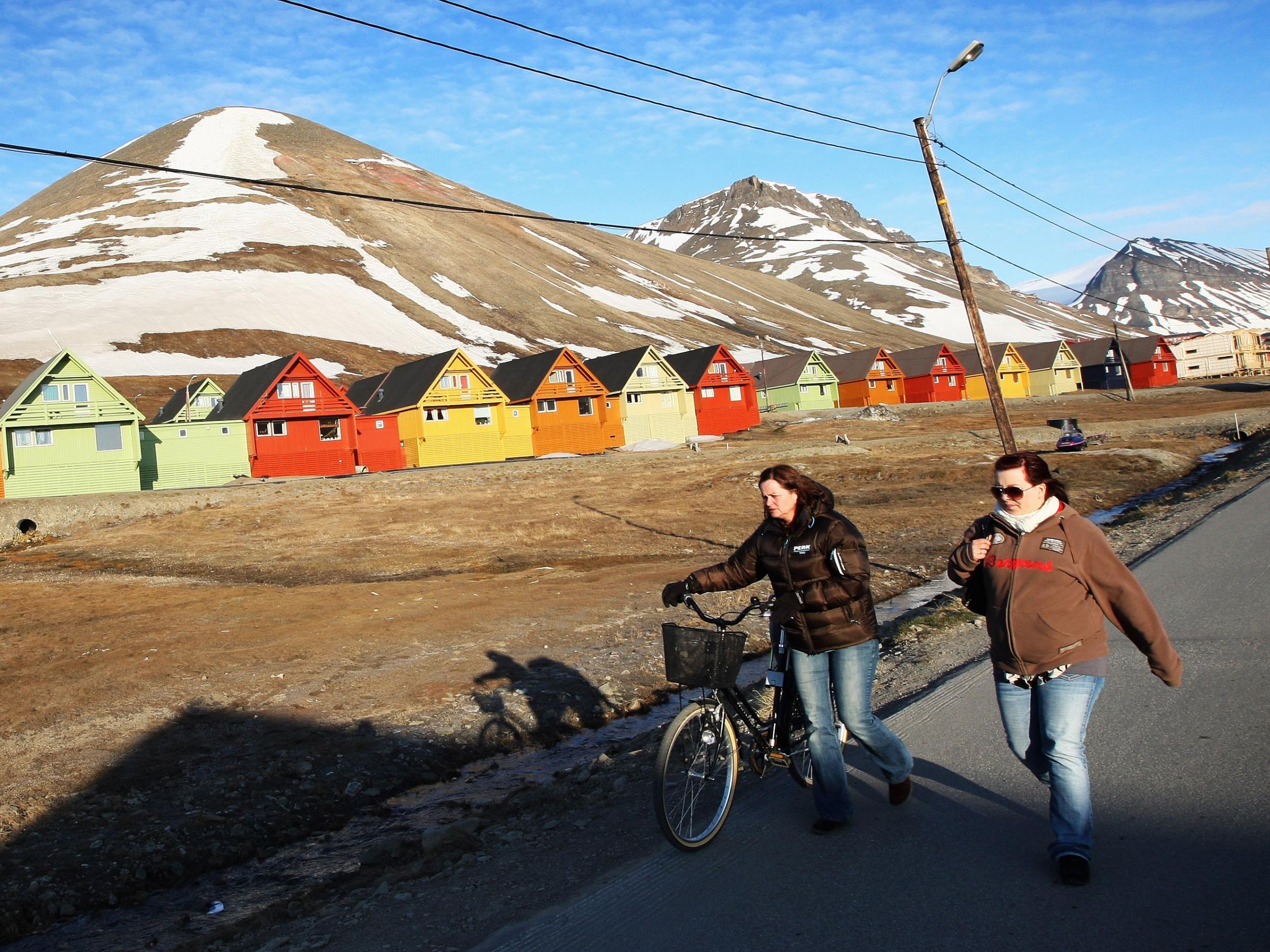Nature, not humans, could be cause of up to half of Arctic sea ice loss, study claims
‘Realising that humans have caused 50 to 70 per cent of the decline is not good news’

Your support helps us to tell the story
From reproductive rights to climate change to Big Tech, The Independent is on the ground when the story is developing. Whether it's investigating the financials of Elon Musk's pro-Trump PAC or producing our latest documentary, 'The A Word', which shines a light on the American women fighting for reproductive rights, we know how important it is to parse out the facts from the messaging.
At such a critical moment in US history, we need reporters on the ground. Your donation allows us to keep sending journalists to speak to both sides of the story.
The Independent is trusted by Americans across the entire political spectrum. And unlike many other quality news outlets, we choose not to lock Americans out of our reporting and analysis with paywalls. We believe quality journalism should be available to everyone, paid for by those who can afford it.
Your support makes all the difference.Natural processes may be responsible for up to half the dramatic decline in sea ice in the Arctic over the last four decades, according to a new study.
While air currents had been affected by human-induced climate change, most of the changes were the result of an internal variability within the system over several decades, the researchers found.
And they estimated these natural fluctuations were responsible for between 30 and 50 per cent of the sea ice loss since 1979.
Other climate scientists said the study helped explained why their computer models had underestimated the reduction in sea ice compared to what has actually happened in the region.
Sea ice in the Arctic and Antarctic has been hitting record lows in recent months.
The loss of sea ice is believed to be accelerating global warming, because white ice reflects the sun's heat back out to space, while dark water absorbs it. The rapid warming in the Arctic also has knock-on effects on the weather across much of the northern hemisphere.
Writing in the journal Nature Climate Change, the team of researchers, led by Dr Qinghua Ding of University of California, Santa Barbara, said they had found that 70 per cent of the changes to the atmospheric circulation were due to natural causes.
“The potentially large contribution of internal variability to sea-ice loss over the next 40 years reinforces the importance of natural contributions to sea-ice trends over the past several decades," they said.
Dr Nathanial Johnson, another member of the team, told The Independent that he hoped climate science deniers would not seize on their research in an attempt to suggest what is happening in the Arctic is purely natural.
“It would be unfortunate if this gets spun into a way that really sort of downplays the importance of anthropogenic forcing in this sea ice decline,” he said.
“There is internal, natural climate variability that can lead to these fluctuations about the long-term trend, but there’s nothing that really discounts the science behind the anthropogenic sea ice decline, nothing that really invalidates the models that are projecting this long-term decline.”
Dr Johnson, of Princeton University in the US, added there was “some debate” about how natural the changes in atmospheric circulation were, saying this should be the subject of more research.
“We do know that global warming, anthropogenic forcing, will have some effect on the circulation,” he said.
He said the discovery of the extent of the role played by nature in reducing sea ice suggested there was “potential for a recovery relative to the long-term, downward trend”.
“But I think the overall impact of anthropogenic forcing, the overall downward trend I think will likely dominate and prevent a true recovery of the sea ice, a full recovery,” he added.
Scientists should not revisit predictions that the Arctic should be completely clear of sea ice, apart from some trapped within small inlets, by the middle of this century, Dr Johnson added.
In an accompanying article in Nature Climate Change, Neil Swart, of the Canadian Centre for Climate Modelling and Analysis, wrote that the findings would need “independent observational corroboration”.
“The results … do not call into question whether human-induced warming has led to Arctic sea-ice decline — a wide range of evidence shows that it has,” he said.
“Rather, the implication is that Arctic sea-ice is less sensitive to human-induced forcing than if one assumes that all loss observed to date is anthropogenically driven.”
Commenting on the research, Professor Chris Rapley, a climatologist at University College London, said it offered a reason why climate models had not predicted the speed of the decline in Arctic sea ice.
“Over the last three decades satellite instruments have measured about a 13 per cent per decade loss of summer minimum sea ice extent in the Arctic. Models have consistently underestimated the loss,” he said.
“The new paper offers an explanation of the discrepancy. The authors provide evidence of a process by which … natural variability of the Arctic atmospheric circulation may have contributed as much as 30 to 50 per cent of the decline.
“Even so, the systematic component of loss due to human-induced climate change remains robust and significant.”
Dr Twila Moon, of Bristol University, said the “well-designed” study provided the “best detail yet to determine how much Arctic sea ice decline is caused by humans and how much is natural environmental change”.
“Realising that humans have caused 50 to 70 per cent of the decline is not good news,” she said.
“Continuing to put carbon dioxide and other emissions into the atmosphere is having a direct negative influence on the Arctic, including sea ice.
“This study is yet more evidence that serious and detrimental changes are happening now and are caused by our emissions habits.”
Join our commenting forum
Join thought-provoking conversations, follow other Independent readers and see their replies
Comments